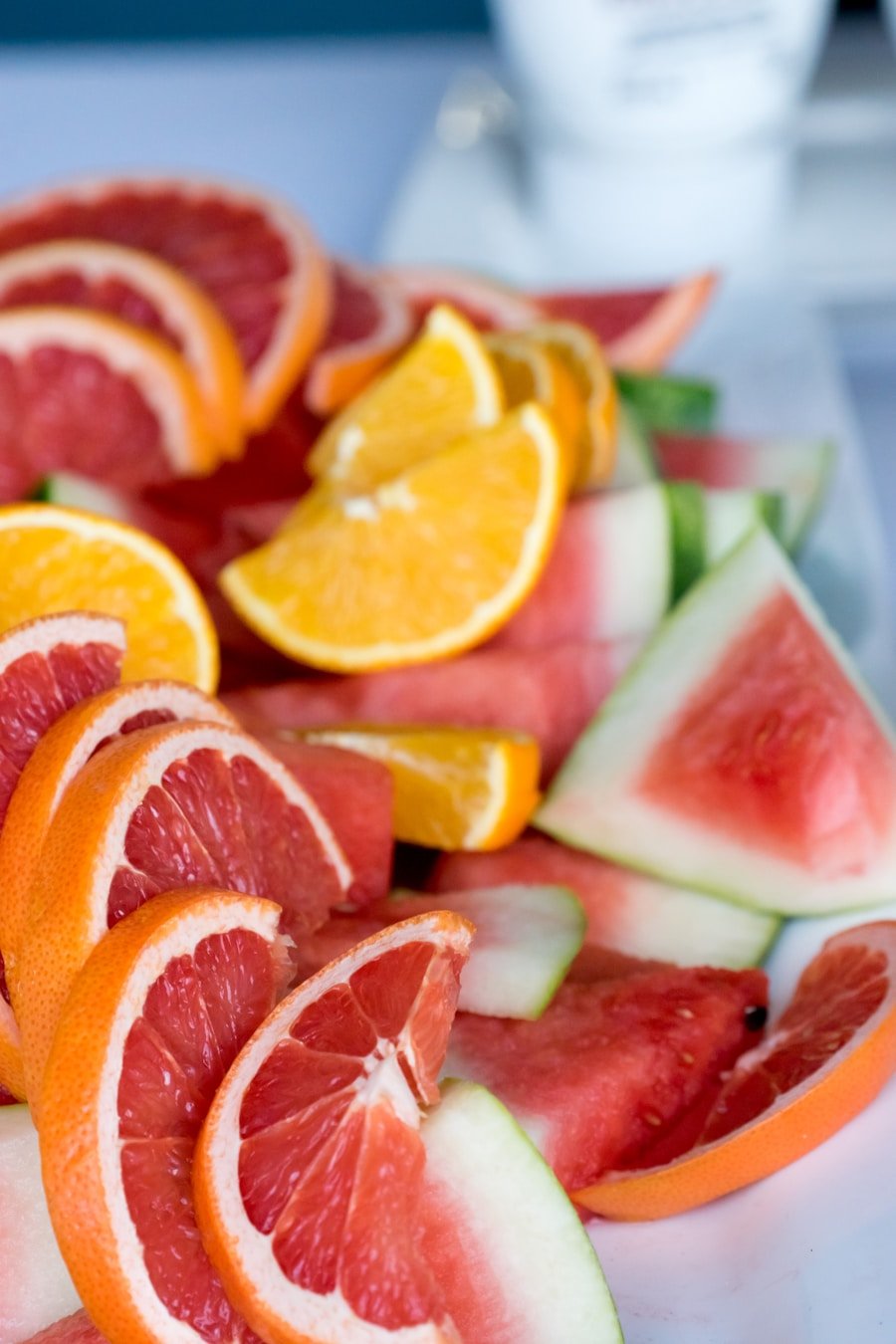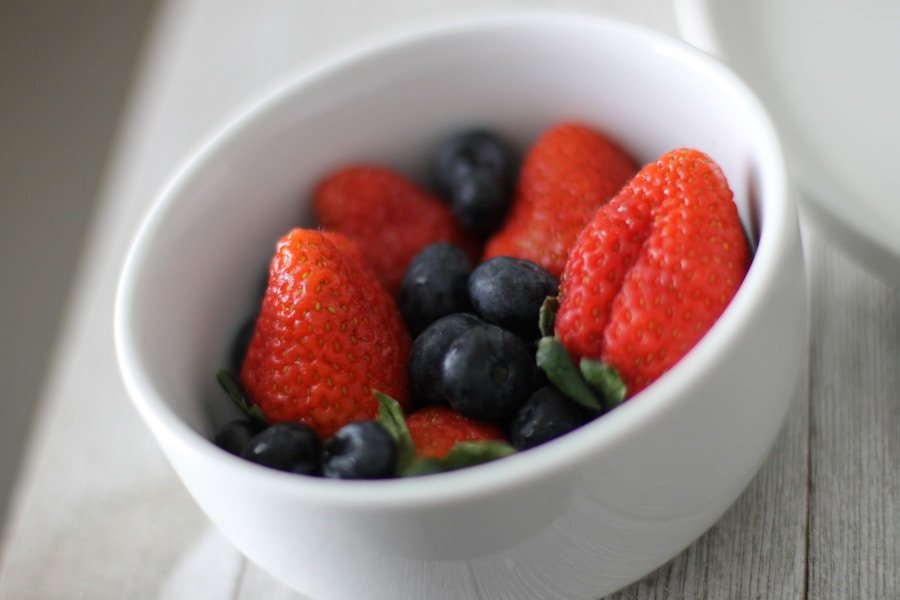In the quest for a slimmer waistline, the role of diet cannot be overstated. While exercise is crucial for overall health and fitness, the foods we consume play a pivotal role in shaping our bodies. Waist-trimming foods are those that not only help reduce body fat but also promote overall well-being.
These foods are typically low in calories but high in nutrients, making them ideal for anyone looking to shed excess weight or maintain a healthy figure. The right combination of foods can enhance metabolism, reduce bloating, and provide the necessary energy to fuel an active lifestyle. Understanding the science behind waist-trimming foods is essential for making informed dietary choices.
Many of these foods are rich in vitamins, minerals, and antioxidants, which can help combat inflammation and support metabolic processes. Additionally, they often contain compounds that promote satiety, helping to curb cravings and prevent overeating. By incorporating a variety of waist-trimming foods into your daily meals, you can create a balanced diet that not only aids in weight loss but also contributes to long-term health.
Key Takeaways
- Introduction to Waist-Trimming Foods:
- Waist-trimming foods can help in achieving a slimmer waist and a healthier body.
- Leafy Greens for a Slimmer Waist:
- Leafy greens like spinach and kale are low in calories and high in nutrients, making them great for trimming the waist.
- Lean Protein for a Toned Midsection:
- Lean protein sources like chicken, turkey, and fish can help in building muscle and achieving a toned midsection.
- Fiber-Rich Foods to Aid Digestion and Reduce Bloating:
- Foods high in fiber such as fruits, vegetables, and whole grains can aid digestion and reduce bloating for a slimmer waistline.
- Healthy Fats for a Satisfying and Slimming Diet:
- Incorporating healthy fats from sources like avocados, nuts, and olive oil can help in creating a satisfying and slimming diet.
Leafy Greens for a Slimmer Waist
Leafy greens are often hailed as the cornerstone of any waist-trimming diet. Vegetables such as spinach, kale, arugula, and Swiss chard are incredibly low in calories while being packed with essential nutrients. For instance, a cup of raw spinach contains only about seven calories but is rich in vitamins A, C, and K, as well as iron and calcium.
This nutrient density makes leafy greens an excellent choice for those looking to fill their plates without adding excessive calories. In addition to their low caloric content, leafy greens are high in fiber, which plays a crucial role in digestion and satiety. Fiber helps slow down the digestive process, allowing you to feel fuller for longer periods.
This can be particularly beneficial when trying to manage portion sizes and avoid unhealthy snacking. Incorporating leafy greens into your meals can be as simple as adding a handful of spinach to your morning smoothie or creating a vibrant salad with mixed greens as the base. The versatility of these vegetables allows for endless culinary creativity while supporting your waist-trimming goals.
Lean Protein for a Toned Midsection

Lean protein is another essential component of a waist-trimming diet. Foods such as chicken breast, turkey, fish, legumes, and low-fat dairy products provide the body with the necessary building blocks for muscle repair and growth. Protein is known for its thermogenic effect; it requires more energy to digest compared to fats and carbohydrates, which can lead to increased calorie expenditure.
This makes lean protein an excellent ally in the pursuit of a toned midsection. Moreover, protein-rich foods contribute to feelings of fullness and satisfaction after meals. When you consume adequate protein, you are less likely to experience hunger pangs shortly after eating, which can help prevent mindless snacking throughout the day.
For example, incorporating grilled chicken into a salad or enjoying a serving of Greek yogurt with berries can provide both nutritional benefits and lasting satiety. By prioritizing lean protein sources in your diet, you can support muscle maintenance while effectively managing your waistline.
Fiber-Rich Foods to Aid Digestion and Reduce Bloating
| Fiber-Rich Foods | Amount of Fiber (per 100g) | Calories (per 100g) |
|---|---|---|
| Avocado | 6.7g | 160 |
| Black Beans | 8.7g | 339 |
| Broccoli | 2.6g | 34 |
| Chia Seeds | 34.4g | 486 |
| Quinoa | 2.8g | 120 |
Fiber-rich foods are indispensable when it comes to promoting digestive health and reducing bloating. Foods such as beans, lentils, whole grains, fruits, and vegetables are excellent sources of dietary fiber. Fiber aids in digestion by adding bulk to the stool and facilitating regular bowel movements.
This is particularly important for those looking to maintain a flat stomach, as constipation can lead to discomfort and bloating. In addition to promoting regularity, fiber helps regulate blood sugar levels by slowing down the absorption of sugar into the bloodstream. This can prevent spikes in insulin levels that often lead to fat storage around the midsection.
For instance, incorporating beans into your meals not only boosts fiber intake but also provides plant-based protein that can enhance satiety. A hearty lentil soup or a bean salad can be both filling and beneficial for your waistline. By focusing on fiber-rich foods, you can support your digestive system while working towards a slimmer waist.
Healthy Fats for a Satisfying and Slimming Diet
Contrary to popular belief, not all fats are detrimental to weight loss; in fact, healthy fats are an essential part of a waist-trimming diet. Sources of healthy fats include avocados, nuts, seeds, olive oil, and fatty fish like salmon. These fats provide essential fatty acids that the body cannot produce on its own and are crucial for various bodily functions, including hormone regulation and nutrient absorption.
Incorporating healthy fats into your meals can enhance flavor and satisfaction without leading to weight gain when consumed in moderation. For example, adding slices of avocado to a salad or drizzling olive oil over roasted vegetables can elevate the nutritional profile of your dishes while keeping you satiated. Additionally, healthy fats can help balance blood sugar levels and reduce cravings for unhealthy snacks.
By embracing healthy fats as part of your diet, you can enjoy delicious meals while working towards your waist-trimming goals.
Low-Sugar Fruits for a Sweet and Waist-Friendly Treat

Fruits are often perceived as healthy snacks; however, not all fruits are created equal when it comes to waist management. Low-sugar fruits such as berries, apples, pears, and citrus fruits offer sweetness without excessive calories or sugar content. For instance, a cup of strawberries contains about 50 calories and is rich in antioxidants and vitamin C while being low in sugar compared to other fruits like bananas or grapes.
These low-sugar fruits can satisfy sweet cravings while providing essential nutrients that support overall health. Berries are particularly beneficial due to their high fiber content and low glycemic index, which helps regulate blood sugar levels. Incorporating these fruits into your diet can be as simple as adding them to smoothies, yogurt bowls, or salads.
By choosing low-sugar fruits over their higher-sugar counterparts, you can enjoy sweet treats without compromising your waistline.
Whole Grains for Sustained Energy and a Slim Waistline
Whole grains are another vital component of a waist-trimming diet due to their high fiber content and complex carbohydrates. Unlike refined grains that have been stripped of their nutrients during processing, whole grains retain their bran and germ layers, providing more fiber and essential nutrients such as B vitamins and iron. Foods like quinoa, brown rice, oats, and whole wheat bread are excellent sources of whole grains that can help sustain energy levels throughout the day.
The fiber found in whole grains aids in digestion and promotes feelings of fullness, making it easier to manage portion sizes during meals. For example, starting your day with a bowl of oatmeal topped with fresh fruit can provide lasting energy while keeping hunger at bay until lunchtime. Additionally, whole grains have been linked to lower risks of chronic diseases such as heart disease and type 2 diabetes.
By incorporating whole grains into your meals, you not only support your waist-trimming efforts but also contribute to long-term health benefits.
Incorporating Waist-Trimming Foods into Your Diet
Incorporating waist-trimming foods into your diet is not merely about restriction; it’s about making informed choices that nourish your body while supporting your weight management goals. By focusing on leafy greens, lean proteins, fiber-rich foods, healthy fats, low-sugar fruits, and whole grains, you can create balanced meals that promote satiety and overall well-being. The key lies in variety; experimenting with different combinations of these foods can keep your meals exciting while ensuring you receive a wide range of nutrients.
As you embark on this journey towards a slimmer waistline, remember that consistency is crucial. Making small changes over time can lead to significant results without feeling deprived or overwhelmed. Embrace the process of discovering new recipes and flavors that align with your waist-trimming goals while enjoying the myriad health benefits these foods offer.
With dedication and mindful eating practices, achieving a healthier waistline is within reach.
If you are looking to trim your waistline, incorporating certain foods into your diet can be beneficial. According to a study mentioned in a recent article from CNN, exercising within a specific time window can also aid in weight loss.
To read more about this study, visit here.
FAQs
What are some foods that can help trim the waistline?
Some foods that can help trim the waistline include fruits, vegetables, lean proteins, whole grains, and healthy fats. These foods are low in calories and high in nutrients, which can aid in weight loss and reducing belly fat.
How do fruits and vegetables help in trimming the waistline?
Fruits and vegetables are high in fiber, vitamins, and minerals, and low in calories. They can help you feel full and satisfied, reducing the overall calorie intake and aiding in weight loss. Additionally, the fiber in fruits and vegetables can help with digestion and prevent bloating.
What role do lean proteins play in trimming the waistline?
Lean proteins, such as chicken, turkey, fish, and tofu, can help build and maintain muscle mass, which in turn can boost metabolism and aid in burning calories. They also help keep you feeling full and satisfied, reducing the likelihood of overeating.
How do whole grains contribute to trimming the waistline?
Whole grains, such as quinoa, brown rice, and oats, are high in fiber and can help regulate blood sugar levels, keeping you feeling full for longer periods of time. This can prevent overeating and aid in weight loss, including reducing belly fat.
What are some healthy fats that can help trim the waistline?
Healthy fats, such as avocados, nuts, seeds, and olive oil, can help keep you feeling full and satisfied, reducing the likelihood of overeating. They also provide essential nutrients and can aid in reducing inflammation, which is associated with belly fat.
How can incorporating these foods into a balanced diet help trim the waistline?
Incorporating these foods into a balanced diet can help create a calorie deficit, which is essential for weight loss. Additionally, these foods provide essential nutrients that support overall health and can aid in reducing belly fat specifically.